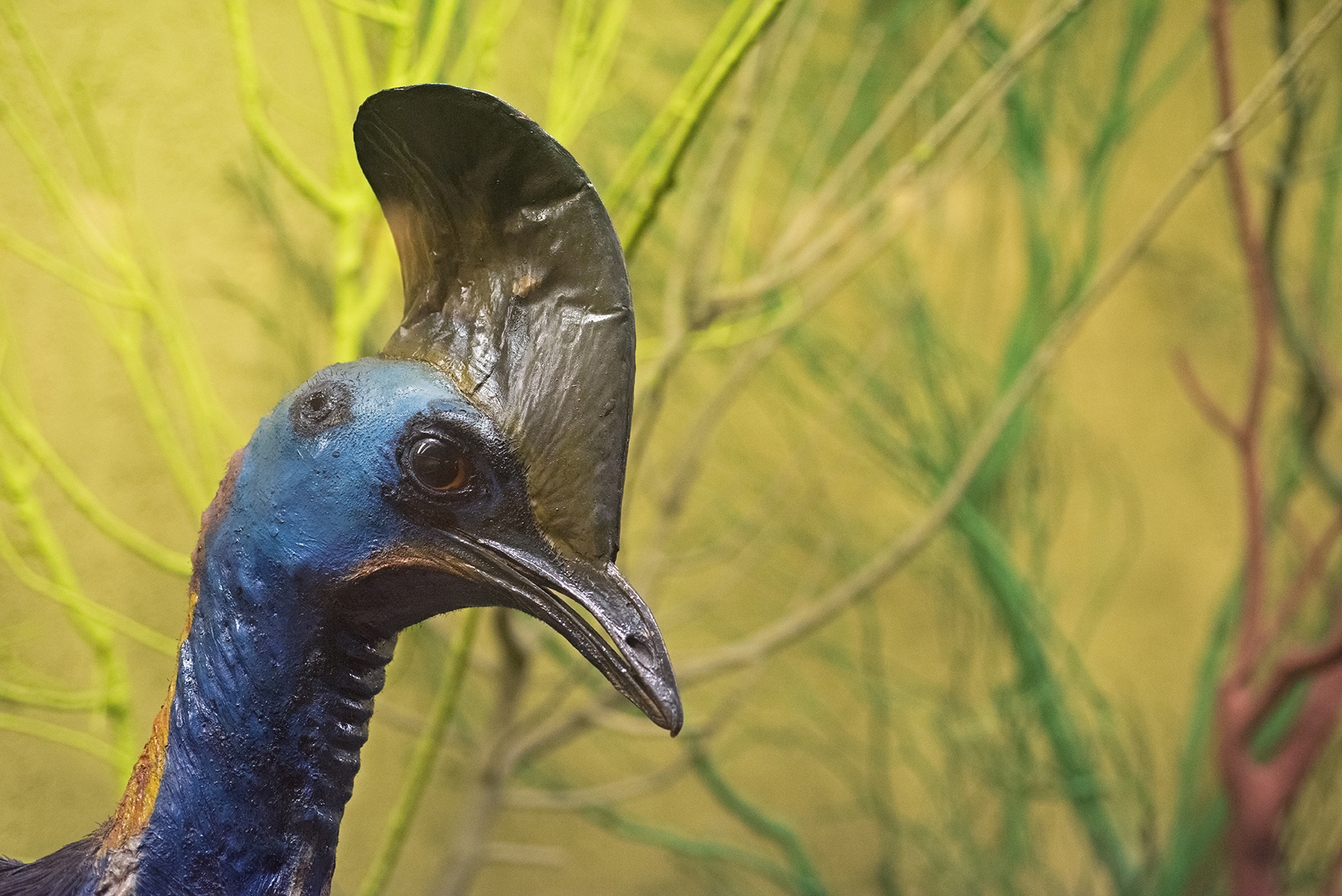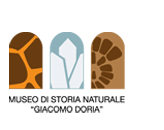
Click here to view image
Mounted leather
First floor, Room 12 (inv. no. MSNG 10837, 10838, 17367, 19671, 24555, 24556, 24558, 24559, 24560, 24561, 24563, 24565, 24567, 24570, 24573)
Moluccas and New Guinea, 1873 - 1893
Find
In Room 12 the group of cassowaries is of particular scientific importance and visual impact.
These elusive, flightless birds are native to the rainforests of New Guinea, nearby islands and north-eastern Australia. They have a keratinous skin-covered casque on their heads and several functions have been proposed: to amplify deep sounds, as a secondary sexual characteristic, or used to batter through underbrush. They are 1.5 to 1.8 m tall and weigh up to 60 kg. Cassowaries have three-toed feet with sharp claws. The second toe, the inner one in the medial position, sports a dagger-like claw that may be 125 mm long. This claw is particularly fearsome since cassowaries sometimes kick humans and other animals with their powerful legs.
The specimens exhibited were collected in Moluccas (Indonesia) and in New Guinea, at the end of the 19th century, by the explorers Odoardo Beccari, Luigi Maria D’Albertis, Lamberto Loria and Antonie Augustus Bruijn, who were in south-east Asia at the time and had contacts with the Museum of Genova.
There are 11 specimens, at different age levels, and some eggs; all three existing species are represented: Casuarius casuarius, Casuarius unappendiculatus e Casuarius bennetti.




